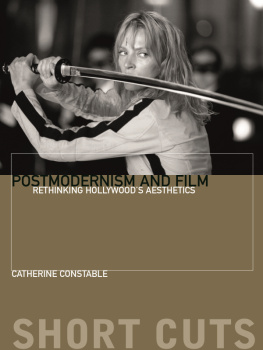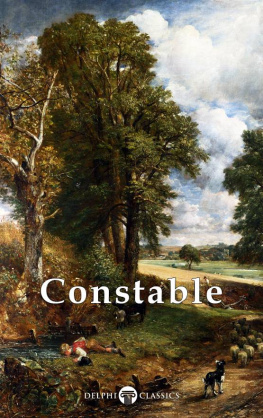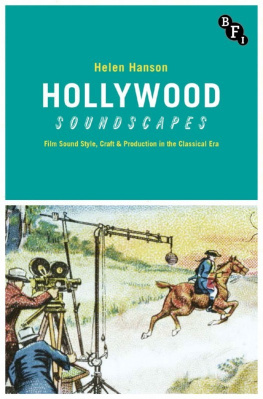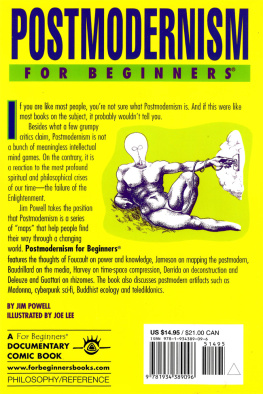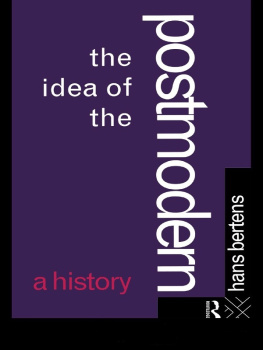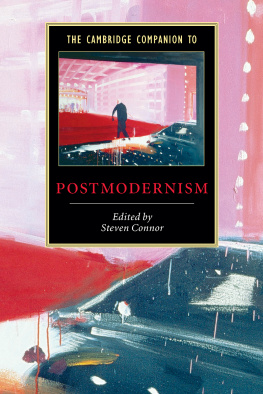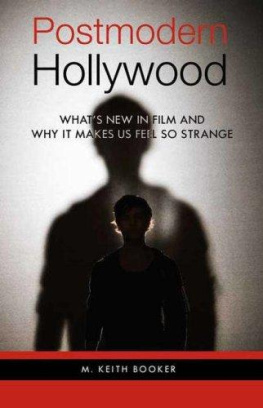SHORT CUTS
INTRODUCTIONS TO FILM STUDIES
OTHER SELECT TITLES IN THE SHORT CUTS SERIES
THE HORROR GENRE: FROM BEELZEBUB TO BLAIR WITCH Paul Wells
THE STAR SYSTEM: HOLLYWOODS PRODUCTION OF POPULAR IDENTITIES Paul McDonald
SCIENCE FICTION CINEMA: FROM OUTERSPACE TO CYBERSPACE Geoff King and Tanya Krzywinska
EARLY SOVIET CINEMA: INNOVATION, IDEOLOGY AND PROPAGANDA David Gillespie
READING HOLLYWOOD: SPACES AND MEANINGS IN AMERICAN FILM Deborah Thomas
DISASTER MOVIES: THE CINEMA OF CATASTROPHE Stephen Keane
THE WESTERN GENRE: FROM LORDSBURG TO BIG WHISKEY John Saunders
PSYCHOANALYSIS AND CINEMA: THE PLAY OF SHADOWS Vicky Lebeau
COSTUME AND CINEMA: DRESS CODES IN POPULAR FILM Sarah Street
MISE-EN-SCNE: FILM STYLE AND INTERPRETATION John Gibbs
NEW CHINESE CINEMA: CHALLENGING REPRESENTATIONS Sheila Cornelius with Ian Haydn Smith
ANIMATION: GENRE AND AUTHORSHIP Paul Wells
WOMENS CINEMA: THE CONTESTED SCREEN Alison Butler
BRITISH SOCIAL REALISM: FROM DOCUMENTARY TO BRIT GRIT Samantha Lay
FILM EDITING: THE ART OF THE EXPRESSIVE Valerie Orpen
AVANT-GARDE FILM: FORMS, THEMES AND PASSIONS Michael OPray
PRODUCTION DESIGN: ARCHITECTS OF THE SCREEN Jane Barnwell
NEW GERMAN CINEMA: IMAGES OF A GENERATION Julia Knight
EARLY CINEMA: FROM FACTORY GATE TO DREAM FACTORY Simon Popple and Joe Kember
MUSIC IN FILM: SOUNDTRACKS AND SYNERGY Pauline Reay
MELODRAMA: GENRE, STYLE, SENSIBILITY John Mercer and Martin Shingler
FEMINIST FILM STUDIES: WRITING THE WOMAN INTO CINEMA Janet McCabe
FILM PERFORMANCE: FROM ACHIEVEMENT TO APPRECIATION Andrew Klevan
NEW DIGITAL CINEMA: REINVENTING THE MOVING IMAGE Holly Willis
THE MUSICAL: RACE, GENDER AND PERFORMANCE Susan Smith
TEEN MOVIES: AMERICAN YOUTH ON SCREEN Timothy Shary
FILM NOIR: FROM BERLIN TO SIN CITY Mark Bould
DOCUMENTARY: THE MARGINS OF REALITY Paul Ward
THE NEW HOLLYWOOD: FROM BONNIE AND CLYDE TO STAR WARS Peter Krmer
ITALIAN NEO-REALISM: REBUILDING THE CINEMATIC CITY Mark Shiel
WAR CINEMA: HOLLYWOOD ON THE FRONT LINE Guy Westwell
FILM GENRE: FROM ICONOGRAPHY TO IDEOLOGY Barry Keith Grant
ROMANTIC COMEDY: BOY MEETS GIRL MEETS GENRE Tamar Jeffers McDonald
SPECTATORSHIP: THE POWER OF LOOKING ON Michele Aaron
SHAKESPEARE ON FILM: SUCH THINGS THAT DREAMS ARE MADE OF Carolyn Jess-Cooke
CRIME FILMS: INVESTIGATING THE SCENE Kirsten Moana Thompson
THE FRENCH NEW WAVE: A NEW LOOK Naomi Greene
CINEMA AND HISTORY: THE TELLING OF STORIES Mike Chopra-Gant
GERMAN EXPRESSIONIST CINEMA: THE WORLD OF LIGHT AND SHADOW Ian Roberts
FILM AND PHILOSOPHY: TAKING MOVIES SERIOUSLY Daniel Shaw
CONTEMPORARY BRITISH CINEMA: FROM HERITAGE TO HORROR James Leggott
RELIGION AND FILM: CINEMA AND THE RE-CREATION OF THE WORLD S. Brent Plate
FANTASY CINEMA: IMPOSSIBLE WORLDS ON SCREEN David Butler
FILM VIOLENCE: HISTORY, IDEOLOGY, GENRE James Kendrick
NEW KOREAN CINEMA: BREAKING THE WAVES Darcy Paquet
FILM AUTHORSHIP: AUTEURS AND OTHER MYTHS C. Paul Sellors
THE VAMPIRE FILM: UNDEAD CINEMA Jeffrey Weinstock
HERITAGE FILM: NATION, GENRE AND REPRESENTATION Beln Vidal
QUEER CINEMA: SCHOOLGIRLS, VAMPIRES AND GAY COWBOYS Barbara Mennel
ACTION MOVIES: THE CINEMA OF STRIKING BACK Harvey OBrien
BOLLYWOOD: GODS, GLAMOUR AND GOSSIP Kush Varia
THE SPORTS FILM: GAMES PEOPLE PLAY Bruce Babington
THE HEIST FILM: STEALING WITH STYLE Daryl Lee
INTERNATIONAL POLITICS AND FILM: SPACE, VISON, POWER Sean Carter & Klaus Dodds
FILM THEORY: CREATING A CINEMATIC GRAMMAR Felicity Colman
BIO-PICS: A LIFE IN PICTURES Ellen Cheshire
FILM PROGRAMMING: CURATING FOR CINEMAS, FESTIVALS, ARCHIVES Peter Bosma
POSTMODERNISM AND FILM
RETHINKING HOLLYWOODS AESTHETICS
CATHERINE CONSTABLE
A Wallflower Press Book
Wallflower Press is an imprint of
Columbia University Press
Publishers Since 1893
New York, Chichester, West Sussex
cup.columbia.edu
Copyright Catherine Constable 2015
All rights reserved.
E-ISBN 978-0-231-85083-4
Wallflower Press is a registered trademark of Columbia University Press.
Cover image: Kill Bill: Vol. 1 (2003) A Band Apart/Miramax
A complete CIP record is available from the Library of Congress
ISBN 978-0-231-17455-8 (pbk. : alk. paper)
ISBN 978-0-231-85083-4 (e-book)
A Columbia University Press E-book.
CUP would be pleased to hear about your reading experience with this e-book at .
CONTENTS
For my father, David Constable
A scientist by training and a great listener who has always been prepared to discuss the nature of truth, life and the universe with me, since I first started asking questions.
With love and thanks.
This is the first book I have written that is based on my teaching and so I must thank all the students who have taken my modules over the last decade or so, particularly Hollywood, Theories of the Moving Image, and, of course, the variously titled Postmodernisms. Thank you for asking great questions and for recommending wonderful films that were then incorporated into the modules! Particular thanks goes to those who team-taught with me on Hollywood, especially Ed Gallafent and Pete Falconer, who have profoundly influenced my thinking about Kill Bill. I also want to thank Adam Gallimore for providing me with a much-needed education in image capture! I have greatly benefitted from being able to try out elements of this book while it was still being written. Members of the Graduate Research Forum at Kings College London were the first to hear chapter one and friends and colleagues kind reception of key ideas encouraged me to continue. Returning to writing has, as ever, involved considerable assistance from great friends, including Valerie Orpens helpful contributions to chapter one and Rachel Jones invaluable engagement with the postmodern theory explored across the book. Jane Worralls meticulous editing has enhanced the whole and restored accuracy to my bibliography! I have been most touched by the help and support of my friends during times in which they have been very hard pressed. My family have had to grow accustomed to not seeing me at weekends and so my profound thanks to David and Iona for remaining entirely cheery and even enthusiastic about this project despite two months of neglect. Finally, back to my students I hope this book will remind you of the modules that you enjoyed and that it succeeds in being both rigorous and fun.
Catherine Constable
June 2015
The term postmodernism in the title Postmodernism and Cinema links together a particular historical period and a distinctive aesthetic style. It is therefore helpful to distinguish between postmodernity an epoch defined by its relation to the modern and postmodern aesthetics the key stylistic features of postmodernist artworks. Both the historical and the aesthetic definitions have been the locus of much disagreement. The issue of delineating a specific postmodern epoch is contentious. There are those who argue that postmodernity does not exist at all; those who position it after modernity, conceptualised as the rise of industrialisation and mass production, who typically nominate start dates from the 1940s to the 1980s; and those who argue the postmodern does not form an epoch but occurs sporadically across a long modernity, beginning in the late eighteenth century with the Age of Enlightenment. There is even less agreement about when postmodernity will come to an end, assuming it has not already ended.

